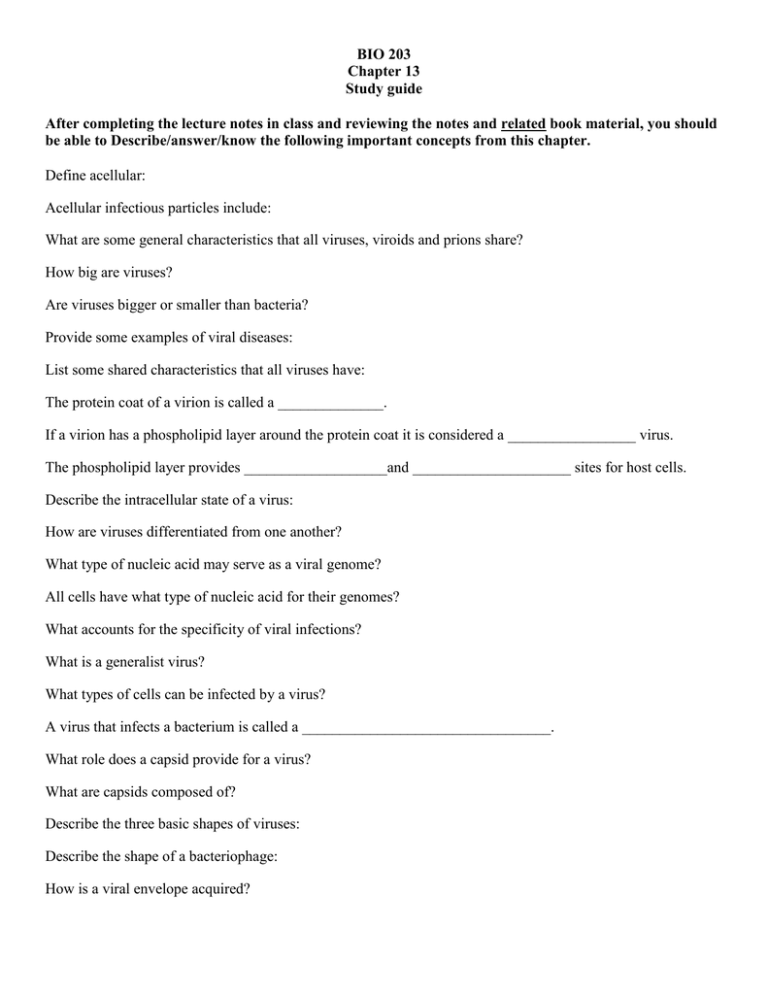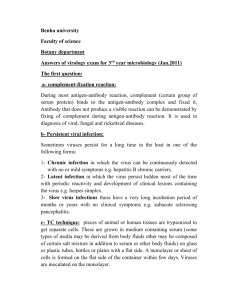BIO 203 Chapter 13 Study guide After completing the lecture notes
advertisement

BIO 203 Chapter 13 Study guide After completing the lecture notes in class and reviewing the notes and related book material, you should be able to Describe/answer/know the following important concepts from this chapter. Define acellular: Acellular infectious particles include: What are some general characteristics that all viruses, viroids and prions share? How big are viruses? Are viruses bigger or smaller than bacteria? Provide some examples of viral diseases: List some shared characteristics that all viruses have: The protein coat of a virion is called a ______________. If a virion has a phospholipid layer around the protein coat it is considered a _________________ virus. The phospholipid layer provides ___________________and _____________________ sites for host cells. Describe the intracellular state of a virus: How are viruses differentiated from one another? What type of nucleic acid may serve as a viral genome? All cells have what type of nucleic acid for their genomes? What accounts for the specificity of viral infections? What is a generalist virus? What types of cells can be infected by a virus? A virus that infects a bacterium is called a _________________________________. What role does a capsid provide for a virus? What are capsids composed of? Describe the three basic shapes of viruses: Describe the shape of a bacteriophage: How is a viral envelope acquired? What role do an envelopes proteins and glycoproteins play? What must a virus depend on for replication? Define lytic replication: List the basic stages of lytic replication: Define lysogeny: Define Prophage: Define induction: What events can cause induction? Compare and contrast lytic and lysogenic replication: Describe how Animal viruses attach to host cells: How are animal viruses and bacteriophages different? Where is a DNA virus replicated in an animal cell? Where is a RNA virus replicated in an animal cell? What type of infections can enveloped viruses cause? Define latent virus: Define provirus: How is a latent virus different than a lysogenic virus? Explain the role of viruses in cancer: Why must viruses be cultured along with other cells for research purposes? Describe the living characteristics of viruses: Describe the nonliving characteristics of viruses: Describe viroids: List the disinfection and sterilization methods that prions are resistant to: How are prions destroyed?






